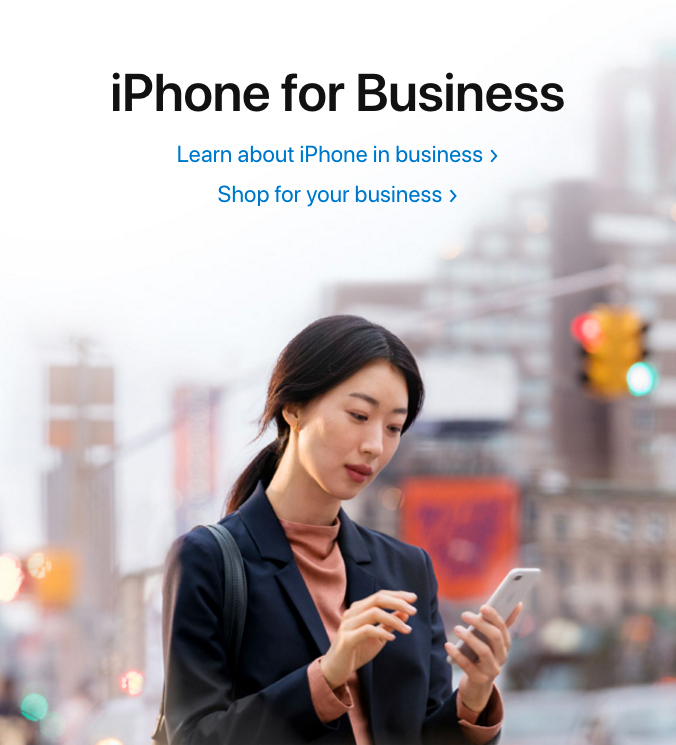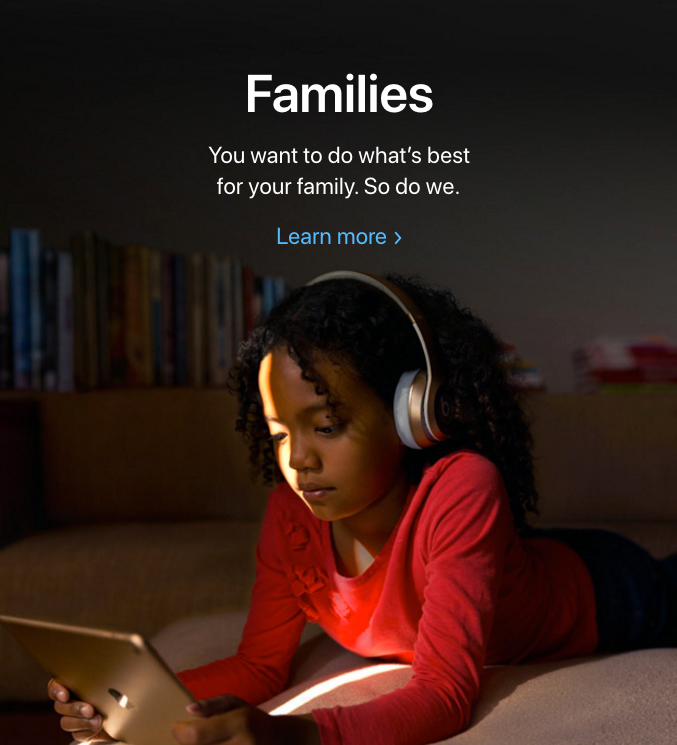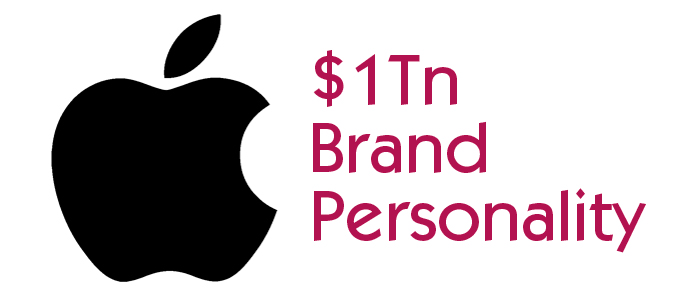
How Apple Does It: Five Tips for Getting Your $1Tn Brand Personality Right
Apple is loved by users around the world. However it’s not only a major brand success in terms of having an almost cult-like fan status and enviable reputation – it’s also a financial powerhouse. In Summer 2018, it became the first publicly listed company ever to be valued at the dizzying sum of one trillion dollars.
The stock market can be frothy but over time its valuations typically reflect the expert opinions of legions of smart investors. Apple being valued at a trillion dollars is a sign of the fact that analysts regard it as a financial powerhouse which will deliver significant profits in years to come.
Yet this is a company which did not exist just a few decades ago compared to other bellwether stocks in the market that have been around in some form for much longer. Part of the business success of the Apple corporation has been in their ability to build a compelling brand personality which underpins the sale of its premium priced products and increasingly services.
It’s critical to remember that branding strategy is the bedrock underpinning your whole business. Branding is NOT marketing or design. It provides the direction for marketing and design so you must map out your brand strategy in detail, including your brand personality, before you even think about marketing or design, if you want to build a highly successful and profitable brand over time.
Here we share five tips on what Apple has done well in defining and communicating its brand personality, with takeaways which could also help your own endeavours to build incomparable brand value in your business. If you’d like to know more about how to build a powerful brand personality then get in touch because an external set of expert eyes evaluating your current approach to your brand profiling and positioning will throw up some very useful insights and help you move forward faster — we’re alway happy to chat.
1. Keep Your Brand Personality Simple but Powerful if You Want to Engage a Diverse Audience
Keeping it simple is a common business and brand refrain. Many management thinkers remind reads of the “KISS” injunction to “Keep It Simple, Stupid” as this video explains.
Yet technology is a difficult field in which to offer simplicity. From the product configuration to the language used and interface offered, the sector has frequently been guilty of bamboozling its customers with geeky smoke and mirrors communications.
Think about the frequency of updates your Windows system asks you to install, and the effort often required to understand what they are and whether you will actually benefit from them.
This complexity is often apparent in much technology branding which utilizes an array of confusing names, numbers and functional descriptors which many users find confusing and alienating. Compare Google’s Android “KitKat” and “Lollipop” to the more typical OS name such as Linux Kernel 3.10.
Related: How to Build a Brand Like Amazon, Technology Branding and Marketing
“Simple” does not mean that a brand personality can get away with being shallow or poorly thought out and executed. A brand personality which emphasizes simplicity still needs to be powerful enough to convince its ideal customers that a complicated concept can be made simple and easy to use without being dumbed down.

Image via ©Apple, Genius Bar
Apple has a clearly defined set of brand values and attributes which feed into its personality. But at the same time, that personality is unique and highly attractive to a large audience. Apple has made the appearance of simplicity a differentiator in terms of what it stands for, its product lineup and its communication. But that was not the case in the beginning and it was a conscious business choice on the company’s part to emphasise simplicity in its personality.
Related: How to Use Brand Values to Drive Unwavering Customer Trust and Commitment
For example, the brand logo was originally a multicoloured apple. That may have matched the flower power vibe of 1970s California but it did not convey simplicity. Over the years the logo has become monochrome in colour and drawn using slightly sleeker lines than was originally the case reflecting the evolution and maturing of its brand personality.
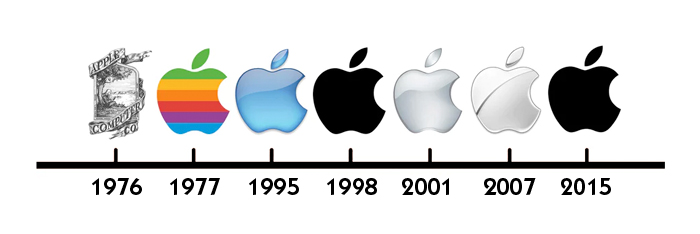
Image via ©Apple
In 1984 Apple aired a commercial in the costly Superbowl spot which celebrated its freethinking, inspirational style. This is a famous advert and you can watch it here.
The story behind this is explained in this video.
But in fact that association with great thinkers, social disruptors and high achievers could be limiting as well as inspirational. That helps to explain why its personality later shifted to a more accessible everyman/everywoman approach, reflected in its commercials drawing on everyday users not iconic historical leaders.
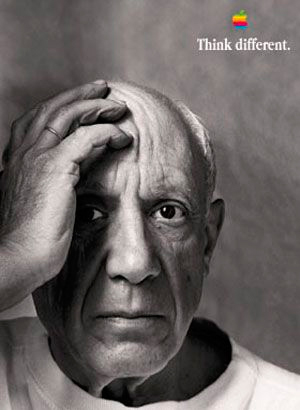
Image via ©Apple
The brand personality also shifted from being product focused to being lifestyle focused — the brand that enhanced your life.
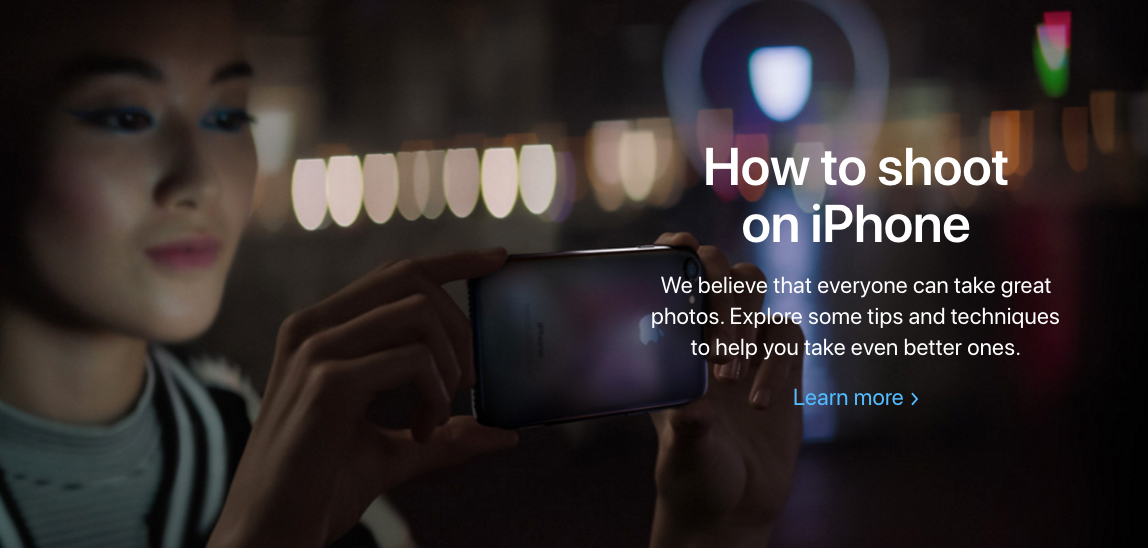
Image via ©Apple
Apple started in the personal computers business and in 2007 and eventually dropped the “Computers” from its name in a brand name change. This was a public affirmation of the perceived benefit of being seen as a lifestyle brand rather than one which was tied too heavily to a particular tech sector. In having recently launched iPods and then iPhones the brand needed to own a personality with attributes associated with easy personal connectivity, intuitive usage and sleek minimalist beautiful design.
We know that sometimes it’s a struggle to develop your brand’s personality and strategy, so we’ve developed three different ways of working with us to help you build your brand successfully. So depending on your preferences:
- We can build your brand for you – find out more here or get in touch [email protected] or ring +353 1 8322724
- Empower you to build your brand – check out the Persona Brand Building Blueprint™ Mastermind here. This is a two-day intensive where you work on your brand with us codifying and mapping out your brand strategy for business growth. Alternatively, join our half-day Branding Accelerator Masterclass for a fast-injection of brand building essentials
- Want a DIY solution? Check out our ‘How to Audit Your Brand’ eprogramme here and ‘How to Build a Brand’ eprogramme here
Get in touch because we lead you through your brand building journey, whether you’re a well-established business hungry to seriously accelerate your expansion and take things to the next level or in the early years of rapid growth spurts.
- Schedule an appointment — we can meet in person or online
- Allow us to create a customised plan for you
- Let’s implement the plan together
- Contact us [email protected] or ring +353 1 8322724 (GMT Dublin/London time 9:00 – 17:30 weekdays)
2. Decide if Your Brand Personality Needs to Work for a Diverse Target Audience or a Very Niche One
When you hear about an “Apple kind of person” what do you think of? Is it a cultural cliché that Brooklyn hipsters or Shoreditch creatives hunch over Apple products all day?
In fact, although it has maintained the aura of cult branding, the Apple brand has a broad base. This is a purposeful choice on its part. Many luxury or lifestyle businesses are exclusive, but Apple has chosen to have a brand personality which is inclusive. That brand personality choice is the platform which has enabled the brand to extend into lower-end versions of its products such as the iPhone SE, without devaluing its attractiveness to higher end purchasers of its premium lines like iPhone XS Max.
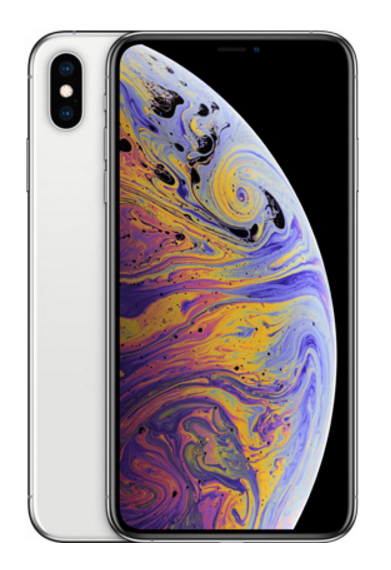
Image via ©Apple, iPhone XS Max
Brand personality needs to work for whomever your target audience is. This can be a challenge when you have multiple target audiences and buyer personas but only a single brand personality. Apple defined its personality in a way which allowed it to appeal to both business and leisure users.
Although it plays on its slick, smooth aesthetic, it always ensures that its brand does not exclude those for whom such an approach is aspirational rather than part of their daily reality.
Related: Increase Sales Using Buyer Personas, Your Guide to Understanding and Targeting Your Ideal Customers
It uses its association with specified groups such as design professionals as a proof of quality, but in fact, for many years it has marketed far beyond such niche user groups. That is reflected in its choice of a personality which can appeal to wildly different user types and use cases.
3. Define a Brand Personality which Works Across Multiple Purchases
For a long time, Apple focused on desktop computers. It had a B2B approach for professional users, in limited industries mostly connected to the creative sector. This was reflected in its brand personality, for example using the iconic 1990s strapline “Think Different” which is suited to creative users in smaller agencies rather than to massive multinationals in traditional business sectors like manufacturing or finance. It was successful but its market capitalization was nowhere near as high as it has become today.
Related: Personality Matters: Bringing Your Brand to Life to Grow Profits
In its second era, Apple expanded into iPods and home electronics – but its business only really stepped up once it launched smartphones. This move to a much wider target audience was accompanied by a shift in its brand personality to a more democratic approach. For example, it’s advertising of iPods relied on featuring a wide assortment of people. This democratization went further with iPhone advertising which featured user-generated content and photographs. Apple developed on a brand personality which could work seamlessly across multiple customer interactions, and indeed in different categories.
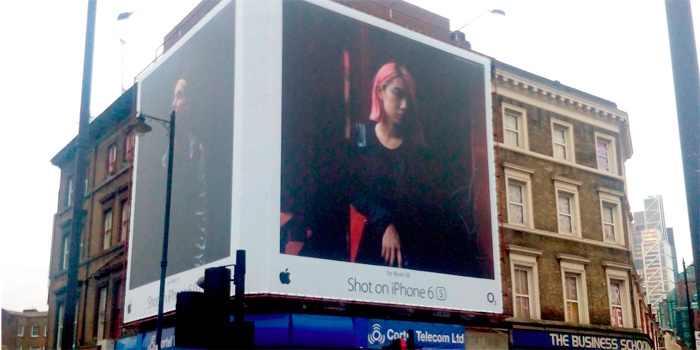
Image via Business Insider
More recently, Apple has been growing its services businesses. The one trillion dollar market capitalization is partly reflected in the growing value attached by financial analysts to services like iTunes, as Fast Company noted.
This contrasts to attempts by other competitors e.g. Microsoft, Sony (an early iPod competitor) whose brand personalities were insufficiently stretchy across categories.
Related: 10 Branding Tips From Silicon Valley on How to Be a Successful Startup Brand
This is a challenging tightrope: you need elements of the personality which do not tie your brand down too much to one area. But they still need to be substantial enough that they stand for something and can differentiate the brand in the marketplace.
You can see Apple’s perspective here.
Want to become an irresistible brand with a really stand out compelling brand personality? Work on your brand personality during one of our Transformational Workshops, like the Persona Brand Building Blueprint™ Mastermind where we take a deep dive, step-by-step on how to build your brand.
You’ll discover and apply the systems and methodologies employed by some of the world’s greatest brands on your brand. In fact, because the Persona Brand Building Blueprint™ Mastermind is a fast-track programme you’ll leave the workshop with your brand strategy and personality fully mapped out and documented ready for implementation to grow your business.
And in case you’re wondering how effective the Persona Brand Building Blueprint™ system is or if it’s the right fit for you, then rest assured because its been used by thousands of happy customers worldwide and its also used in The Economist Group platform too.
Or if you’d like us to create a bespoke plan for your brand, working with you personally, then get in touch. Our Brand Strategy service is tailored to each client individually and uses the Perona Brand Building Blueprint™ System. It provides difference and distinction for your brand so it stands out and helps your brand ultimately resonate with your ideal customers because this is what enables you to increase sales.
4. Exert Control Across All of Your Brand Touchpoints
Brand personality matters only in as much as you can express it. If you are unable to communicate your brand personality across every single touchpoint on and offline then its impact is negligible and sometimes eliminated altogether.
This is why successful businesses give careful attention to bringing their brand personality to life across as many of the touchpoints in the customer lifecycle as possible, from initial awareness through to purchase, nurturing and maintenance.
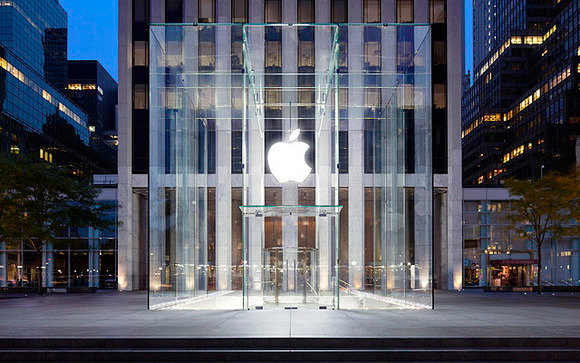
Image via Macworld
When Apple launched, it was normal for computer manufacturers to retail through wholesalers. Over time, Apple took complete control its go-to-market strategy and retail chains because it couldn’t exercise enough control or deliver a high consistent customer experience when relying on third party concession-based retail outlets.
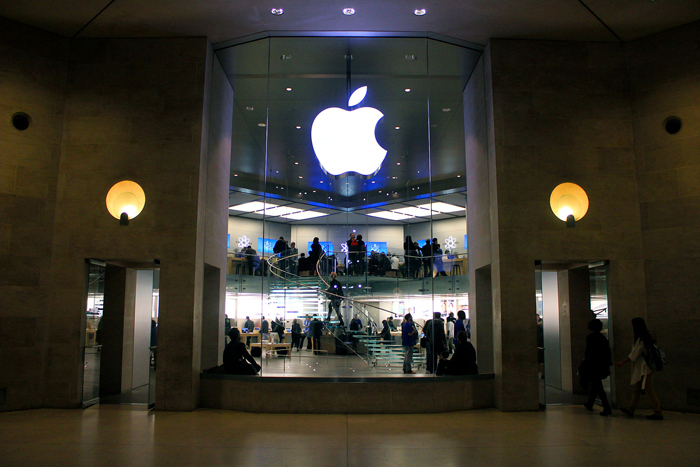
Image via ©Apple, Paris
This gave it the control to execute consistently in line with its brand personality, every time. It also matches the increasingly pragmatic element of the brand personality which has fuelled the growth to a trillion dollars. That democratic approach echoes the broader move in Silicon Valley Brand Strategy which has been heralded by the growth of the consumer internet.
Related: Why Do I Need A Brand? I’ve Got A Great Product and a Logo
For many businesses developing, managing and protecting their brand personality and communication across multiple channels brilliantly is difficult to achieve. It requires deep pockets, phenomenal attention to detail and confidence. The promise inherent in your brand personality needs to be a big enough pull to ensure that as a standalone brand, customers find it compelling. Experiential elements both instore and online support this and reinforce the Apple brand personality. For example, the minimalist simplicity of the instore design underlines the slick simplicity which is part of the brand personality.
Related: Use Psychology in Your Brand Strategy to Create Irresistible Brand Experiences and Increase Sales
But even if you cannot control your retail chain, you can at least seek to maximize control of your brand across its touchpoints. For example, if working with third party distributors, be clear about defining how the brand personality is brought to life and police it rigorously.
5. Build a Brand which Does Not Depend on a Figurehead
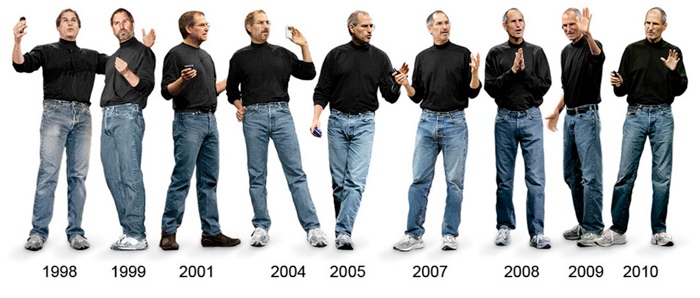
Image via Apple
Sometimes, visionary founders or leaders are identified interchangeably with their companies. Consider the likes of Sir Richard Branson and Virgin or the story of Bloomberg, which is explained in this video.
A lot of people associate Apple with Steve Jobs. He is famous for his CEO brand leadership style and visionary thinking. His work building Apple is celebrated in book and even film. Yet despite his undeniable role, he was absent for part of its development. Indeed, Apple became a $1 trillion company some years after his involvement had ended and the leadership role had passed to Tim Cook.
Related: CEO Brand Leadership: How Vision Drives Brand Growth
A strong ‘on-brand’ figurehead fully aligned with the corporate entity brand can be a powerful endorser, rallying call, voice behind the brand or focal point for stories, but they cannot be interchangeable with the brand personality. At best, they form one of its reasons to believe.
Related: How to Align Your Personal Brand With Your Corporate or Business Brand
It’s important to note that mixing an iconic leader with the brand itself too closely can lead to difficulty adapting when that person is no longer involved in the company or becomes a liability.
Want to discover more about building your standout, №1 powerhouse, personality enriched brand working with us so you can increase your profits and leave your competitors way behind?
- Schedule an appointment — we can meet in person or online
- Allow us to create a customised plan for you
- Let’s implement the plan together
- Contact us [email protected] or ring +353 1 8322724 (GMT Dublin/London time 9:00 – 17:30 weekdays)
Final Word
Apple has hit another big milestone and made a big statement as the first company worth one trillion dollars. That is the result of very focused high-performing leadership, highly desirable products but crucially a carefully developed, consistently executed and tightly managed brand strategy.
Apple’s approach to brand building is very clever and effective because of its attention to detail, consistency and an extremely customer-centric focus. It emphasises clearly defining a target audience and then being disciplined in choosing brand communication which works for them consistently across multiple channels on and offline. The brand focuses on a few essential elements and has been flexible enough to stay relevant and shift over time as the market has evolved.
Questions to Consider
- Have you defined your ideal target customers with laser focussed detail so that you can confidently pick them out of a detective show-style lineup?
- If you wanted to double your profit margin, how would you redefine your ideal target customers? What if you wanted to double your revenue instead what would that target audience profile be?
- How well are follow-on purchases, upsells and cross-sells of your brand’s products and services, specifically reinforcing your brand personality for your ideal customers?
- What can you do to ensure your brand communicates consistently and congruently across all of your customer touchpoints?
- Is your brand strategy strongly defined, codified, mapped out and fully documented so that if your current leadership team changed it would perform comparably if not better?
Your Client Satisfaction Guarantee
- When you work with us we’ll create a customised brand building plan and strategy with clear investment for you tailored to your specific requirements and preferences
- You’ll know each step of your brand building journey before we start because we’ll discuss it, document it and agree on it with you before work commences
- You’ll have timelines, key milestones and deliverables to evaluate and approve for each stage and part of your brand building process
- Because we know the unexpected sometimes happens we can make adjustments along the way if you need it and if something extra is requested we’ll ensure you’re fully appraised about what that entails before committing
- As we achieve pre-agreed objectives you’ll be able to evaluate your brand building work and strategy in progress, coupled with the outcomes to ensure return on investment
Get in touch today because we’d love to get started helping you build your standout, powerhouse brand so you can increase your profits and leave your competitors way behind. Email us[email protected] or ring us +35318322724 (GMT 9:00-17:30) and ask about our VIP Brand Strategy Discovery.

Want a DIY solution to build your brand? Start building your standout, highly visible brand yourself now here

